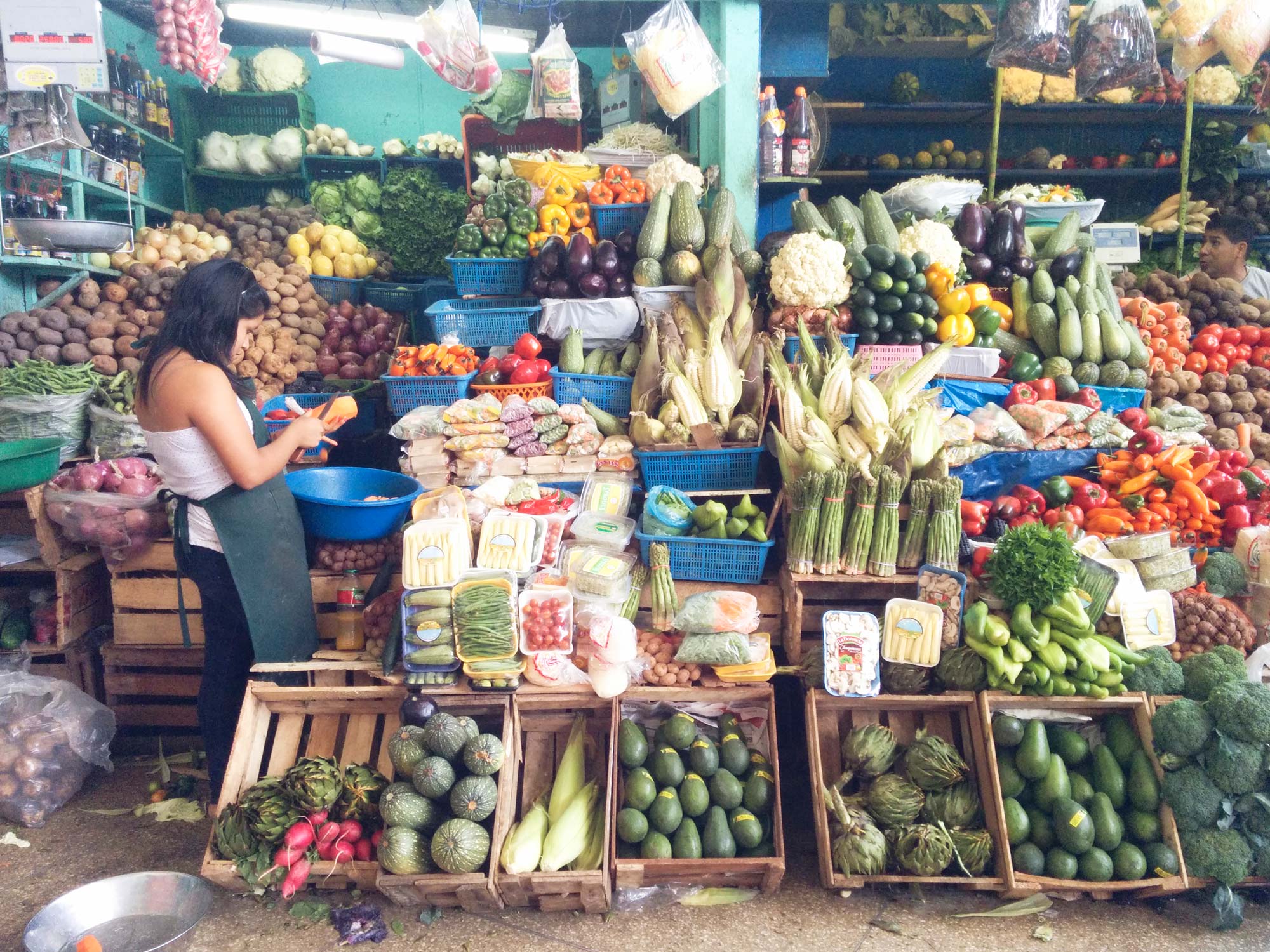
The variety of the microclimates and vegetation makes Perú an excellent producer of multitudes of raw products, such as 3000 types of potatoes, the biggest mais in the world, quinoa, avocados and many fruit I had never seen before.
The history of Perú made the country cuisine various and mixed in colors, tastes and textures. Pre-columbian flavors, spanish influences, chinese waves, amazonian taste.
I was simply astonished everytime I had food in Perú, either in the streets, in fancy restaurants or city markets. My palate got really stimulated by some of the following things. Enjoy.
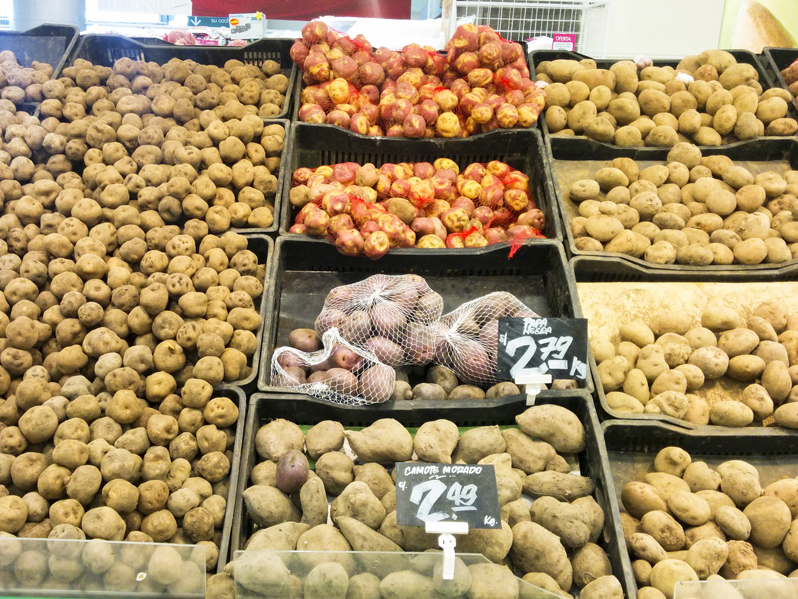
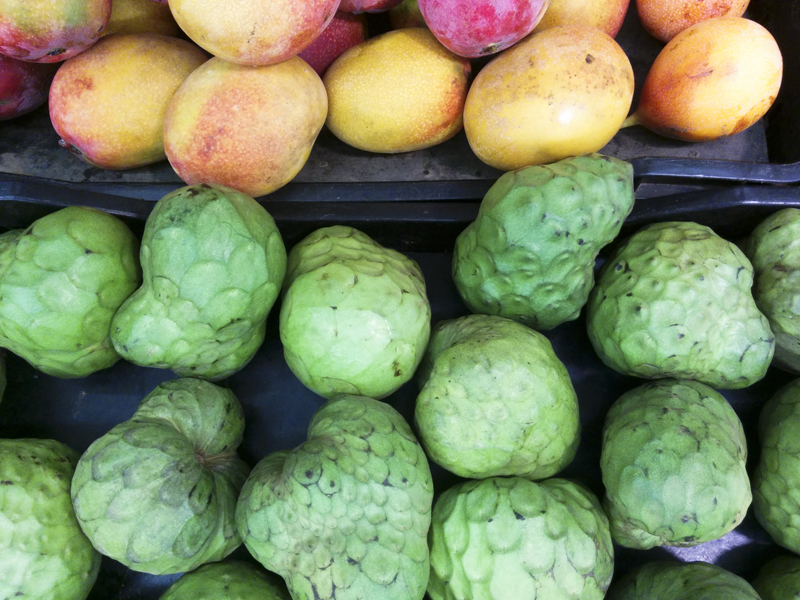
Ceviche: probably the most known piece of the peruvian cuisine, it comes in many many variations. The base is fresh fish marinated in lemon juice and chili, served with onions, mais and camote (sweet potatoe). The fish can be sea fish, seafood, crab. Perfect as an appetizer or a light meal, as it refreshes the mouth and teases the appetite.
Tanta, Lima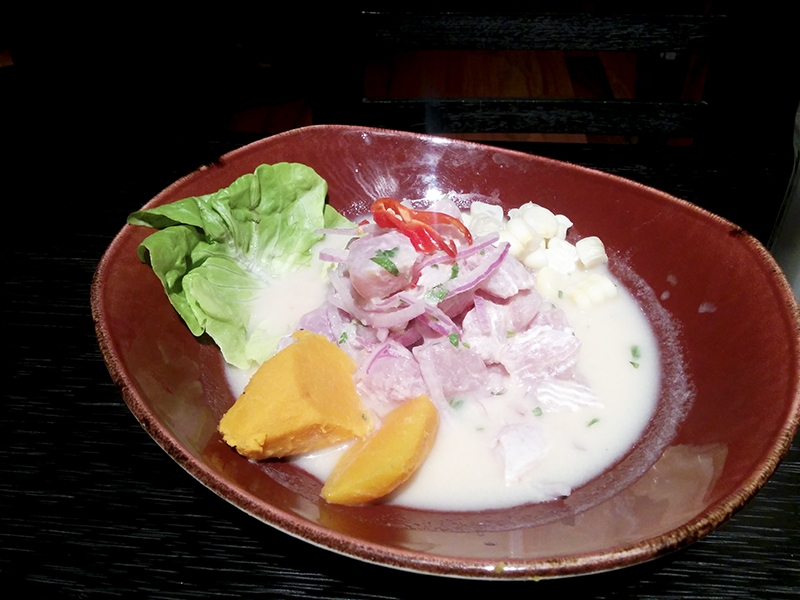 Amaz, Lima
Amaz, Lima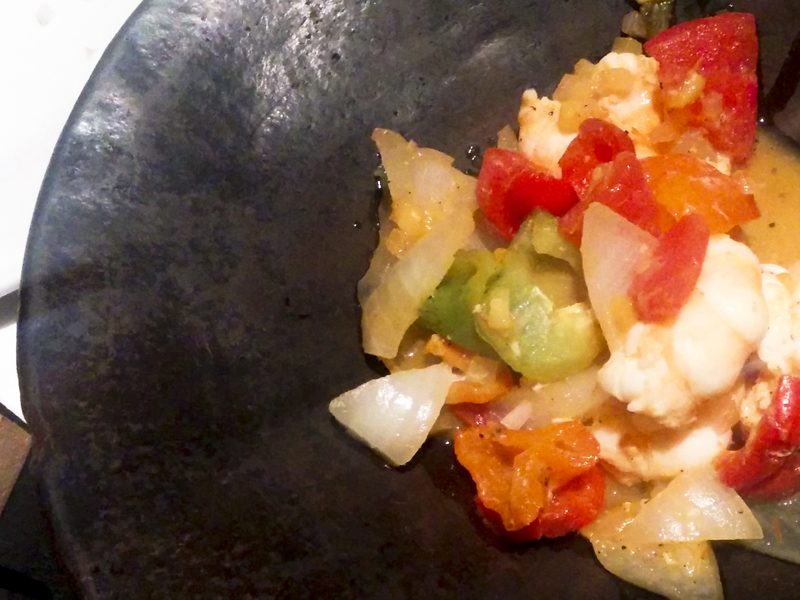 Cala, Lima
Cala, Lima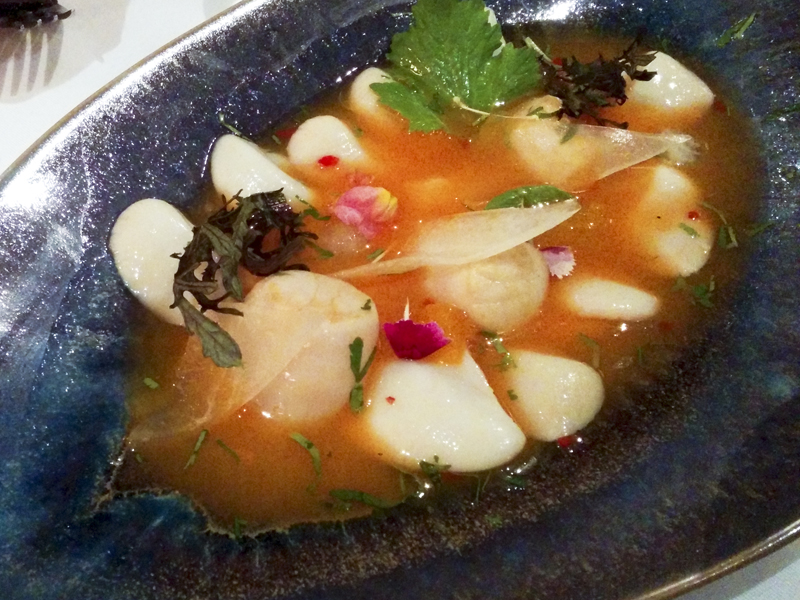
Papa rellena: potatoe filled with meat and onions
Causa: pressed potatoes with lemon juice, chicken or fish in mayonnaise
Tamal: corn flour cooked in leaves and filled with cheese or meat or other ingredients
Anticucho: beef heart skewers
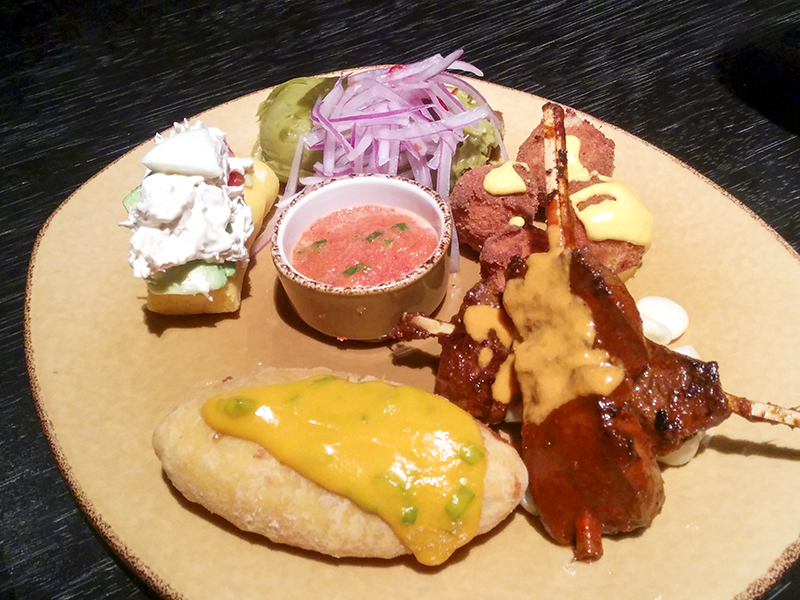
Arroz de Pato: a slightly spicy green risotto with a amazingly tender duck leg.
Cala, Lima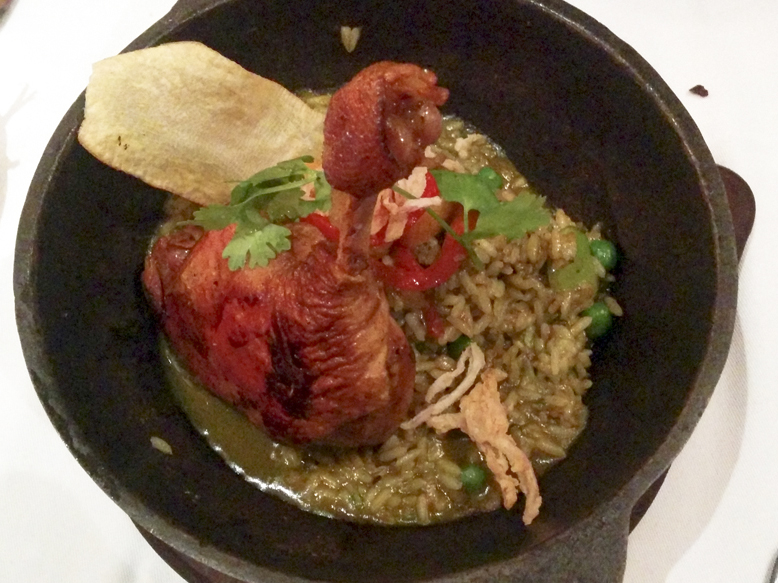
Plaintain: loved it fried or mashed. Had it as mini cakes or as chips with avocado. Simply delicious
Amaz, Lima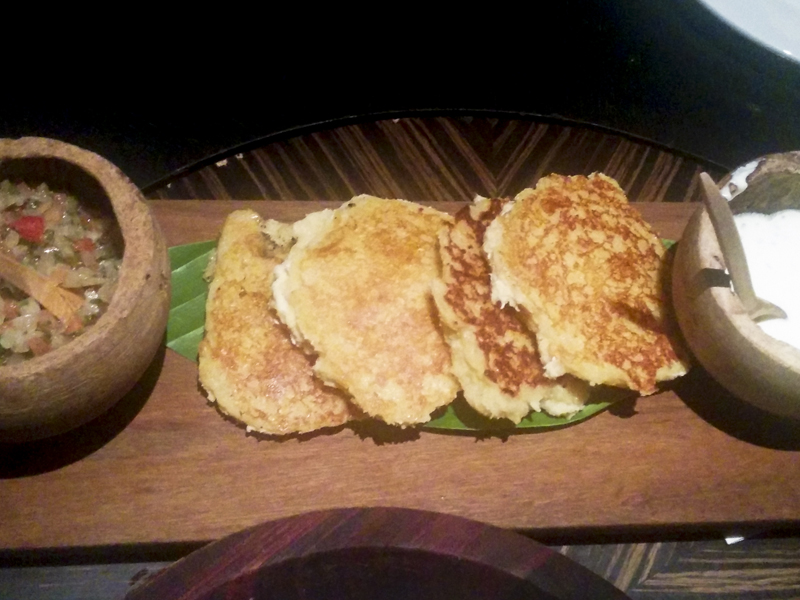 Amaz, Lima
Amaz, Lima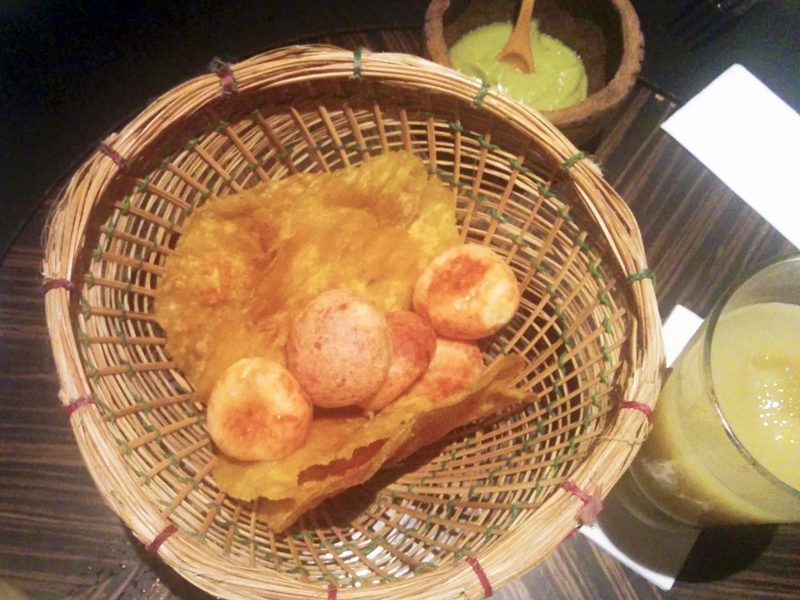
Lomo Saltado: an example of mix of cuisines, in this case asian-creole, stir fried beef with onions and peppers.
Amaz, Lima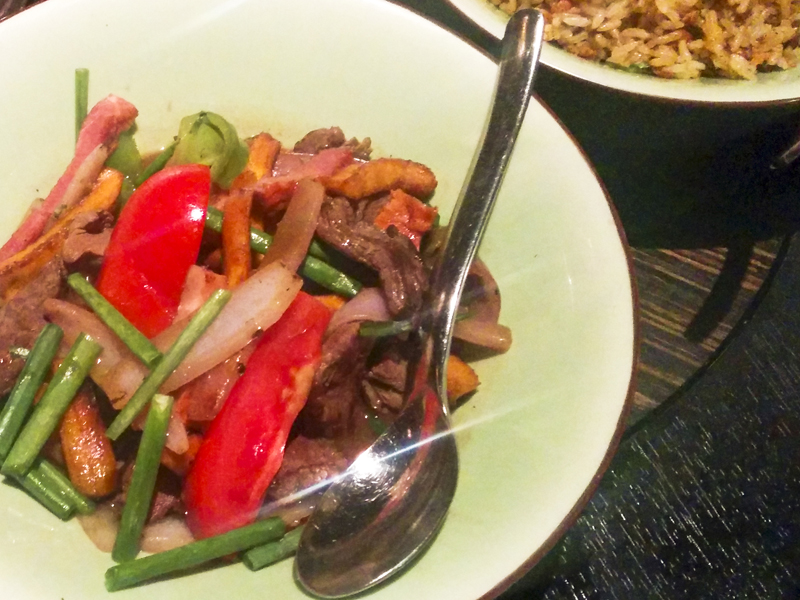
Trucha: when you eat this special trout just fished for example at the Lake Titicaca, the softness and the richness of flavour are unique.
Taquile, Lake Titicaca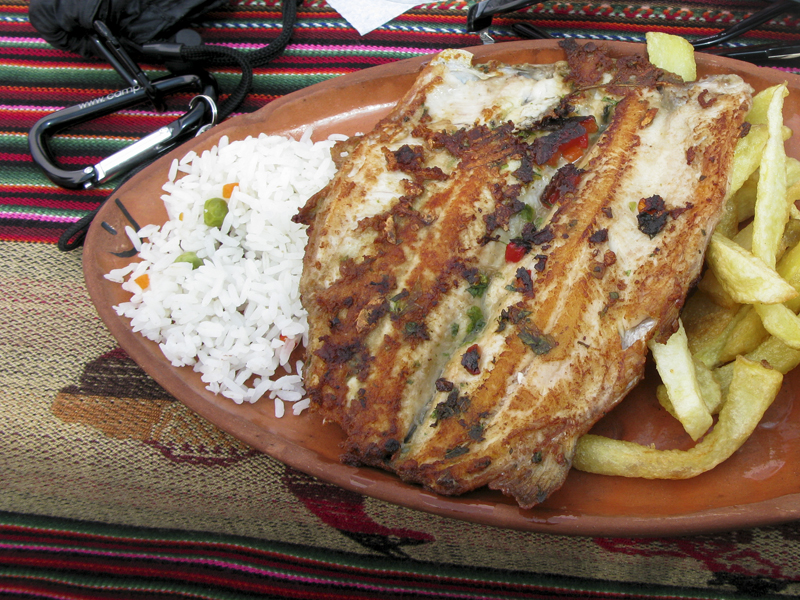
Alpaca: together with cuy (guinepea pig) it represents one speciality of La Sierra, the Highland. Both these meats are very lean and with a peculiar taste. I really liked carpaccio de alpaca, very fresh and strong at the same time.
Cicciolina, Cusco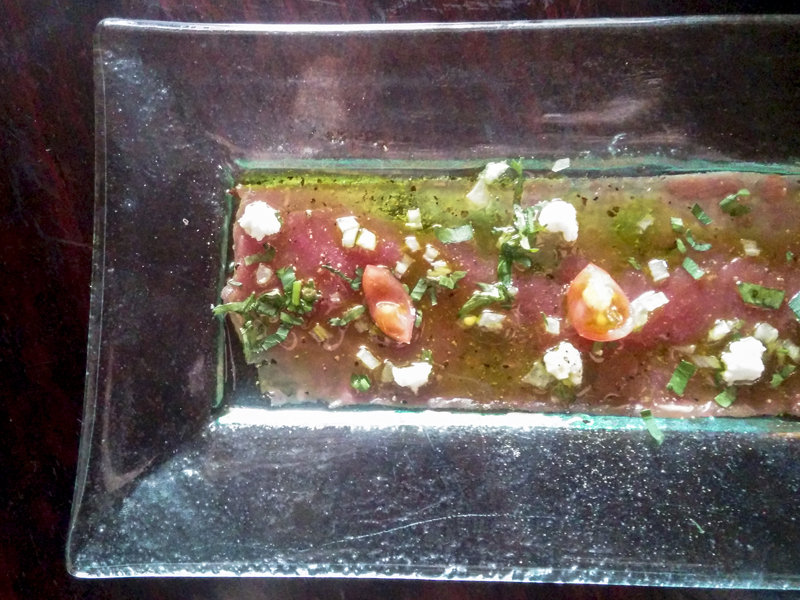 Choclo : boiled mais, juicy and chewy at the same time. Traditionally to be eaten together with a piece of cheese. As you can see, I could not wait and had to bite it immediately.
Choclo : boiled mais, juicy and chewy at the same time. Traditionally to be eaten together with a piece of cheese. As you can see, I could not wait and had to bite it immediately.
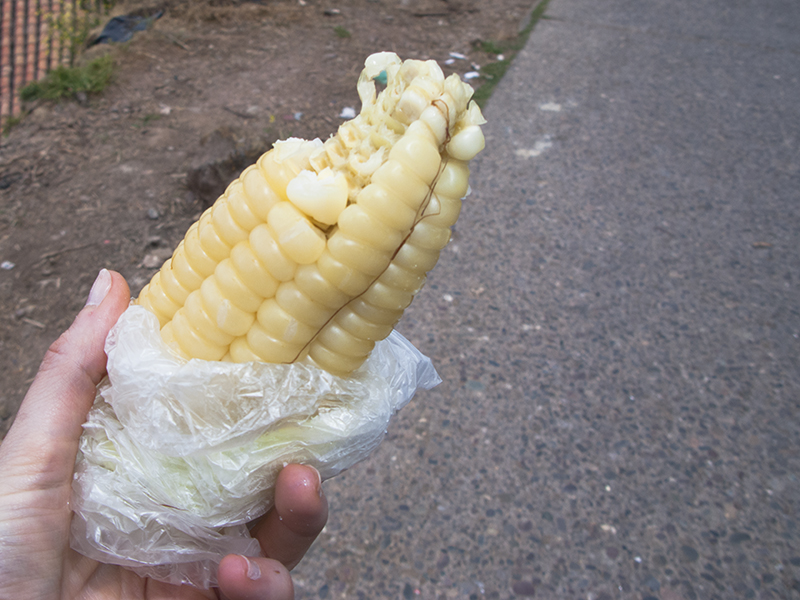
Cachanga: sweet or savory dough pulled until it is very thin and deep fried until it gets super crunchy and golden.
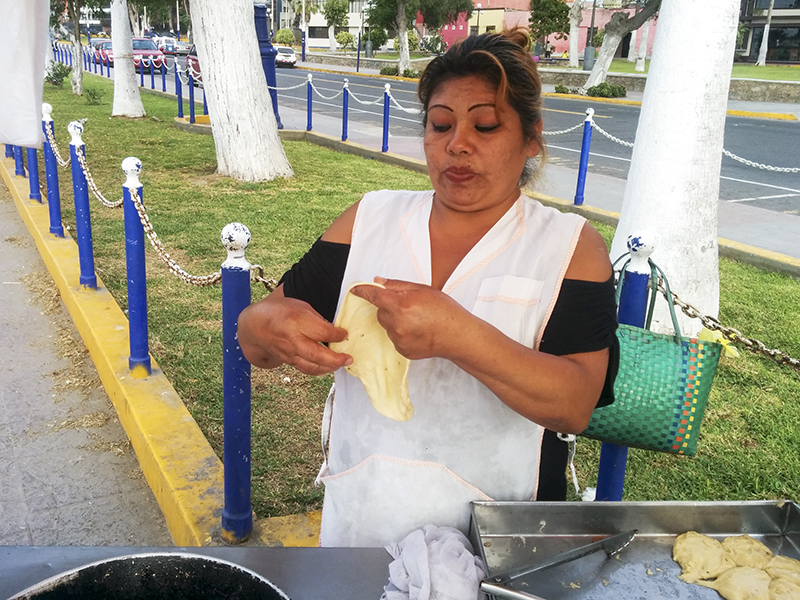
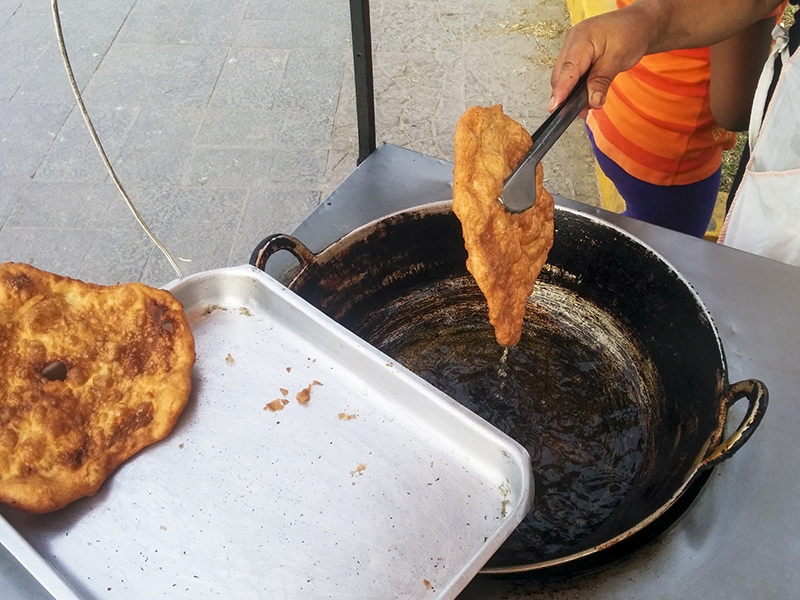
Lucuma: how much I miss this fruit. Either you love it or you hate it. The ones who do not like it say it has an earthy flavor. For me, the best fruit ever. It has a very thick texture and the juice is very dense. It reaches the highest point of pleasure in combination with chocolate. I have tried it in dessert, as juice, as ice-cream.
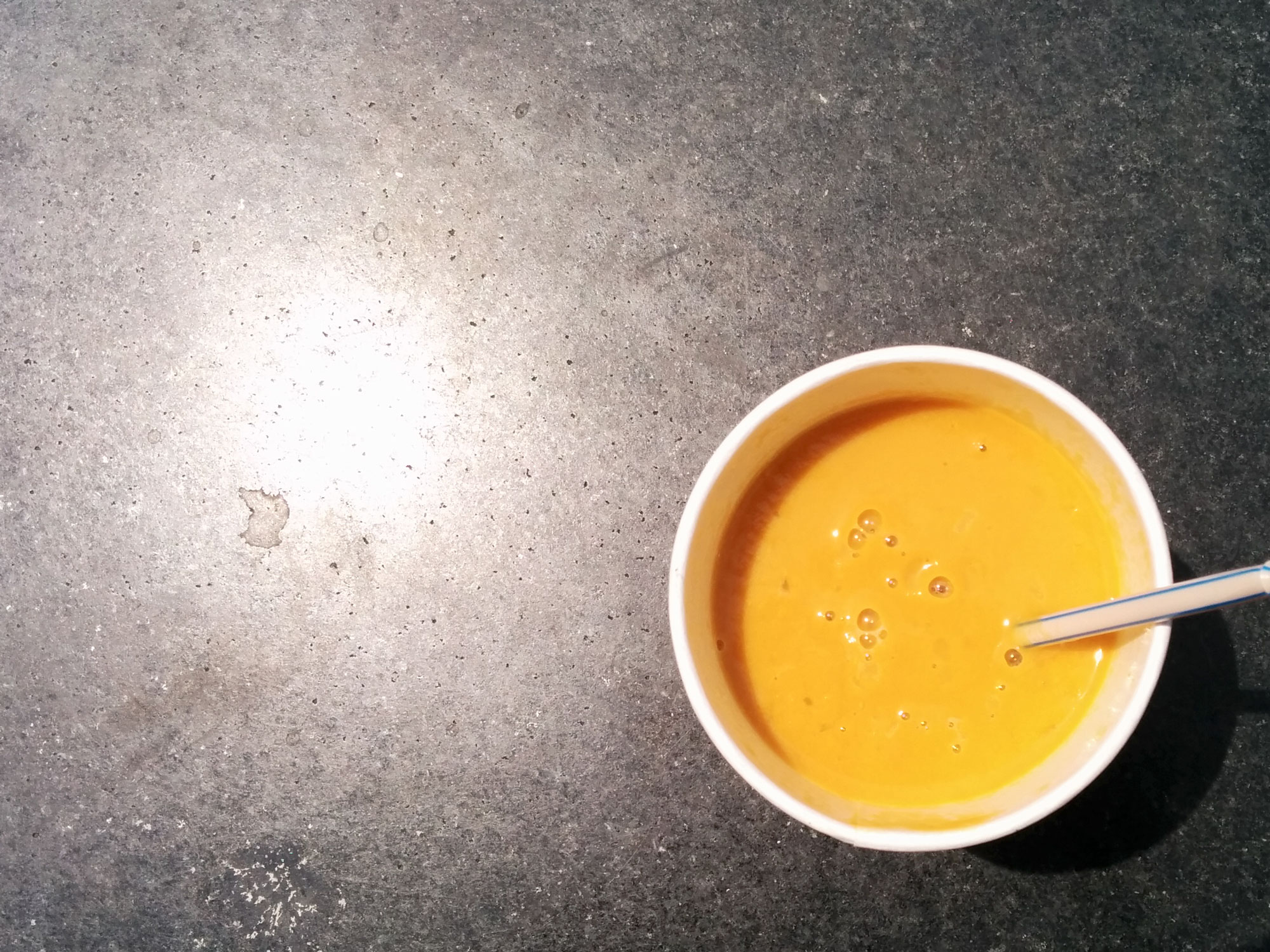
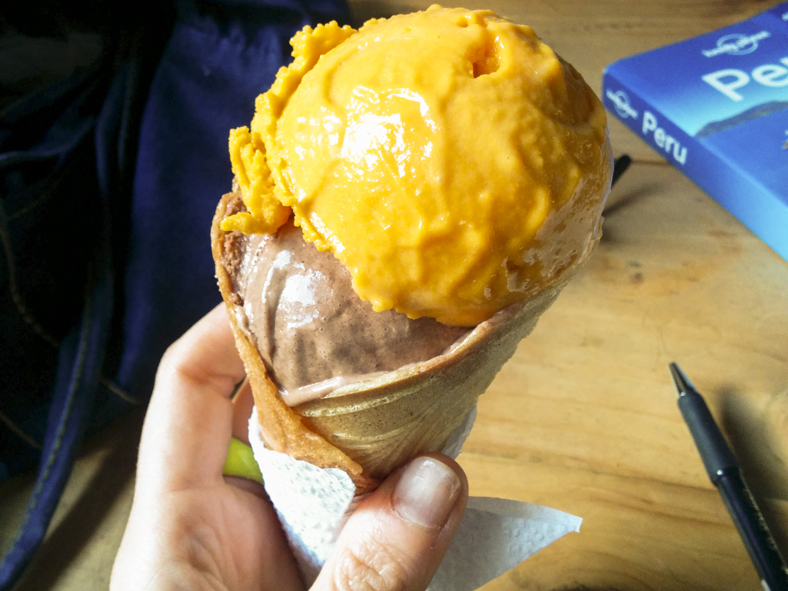 Cala, Lima
Cala, Lima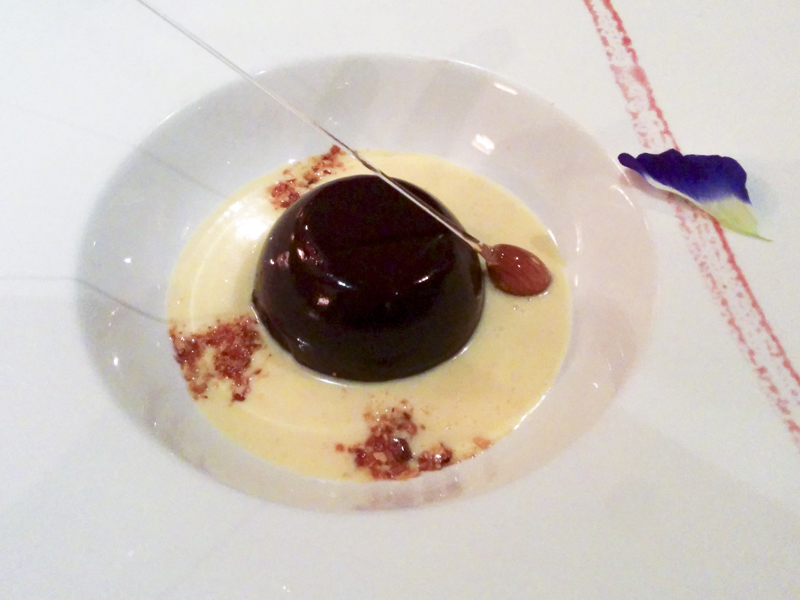
Granadilla: a rounded fruit with a very sweet smell and a very interesting texture. Infact, the edible part are the seeds and the jelly around them. The peel is thick and preserves the fruit from contamination of water or other agents. It is perfect to travel as it can be eaten without washing it, by breaking the peel and sucking the inside. It is very energizing and I like the sweet-sour taste.
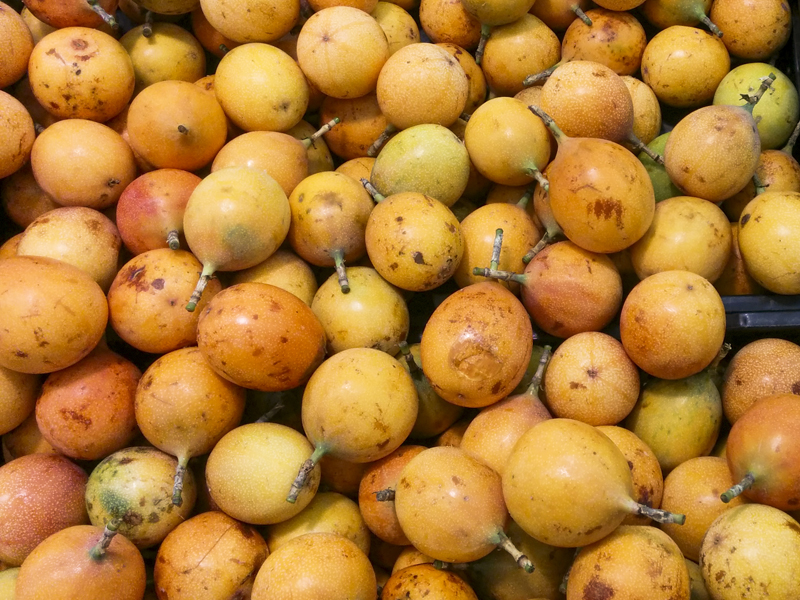
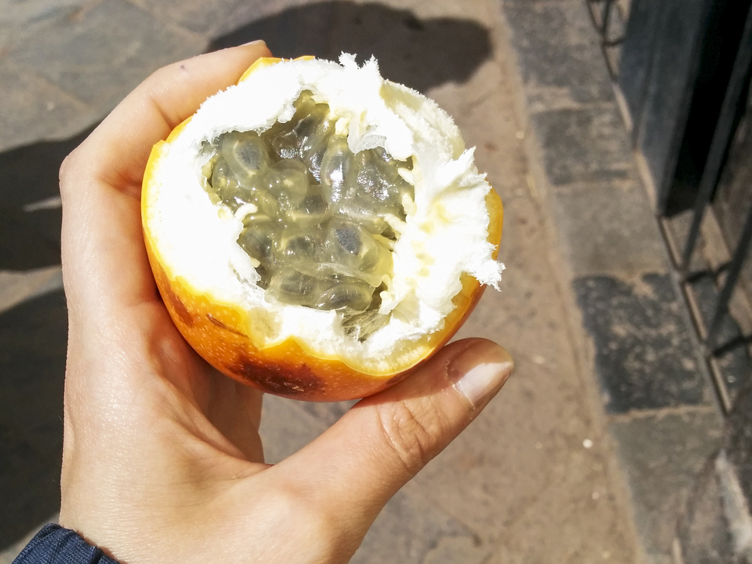
Chocolate: I have to admit in Europe we are used to very refined chocolate, so the chocolate I bought in Perú tasted a bit rough to me. But when used for preparations it is literally an explosion of taste, especially when they combine it with local fruit like lucuma or cherimoya.
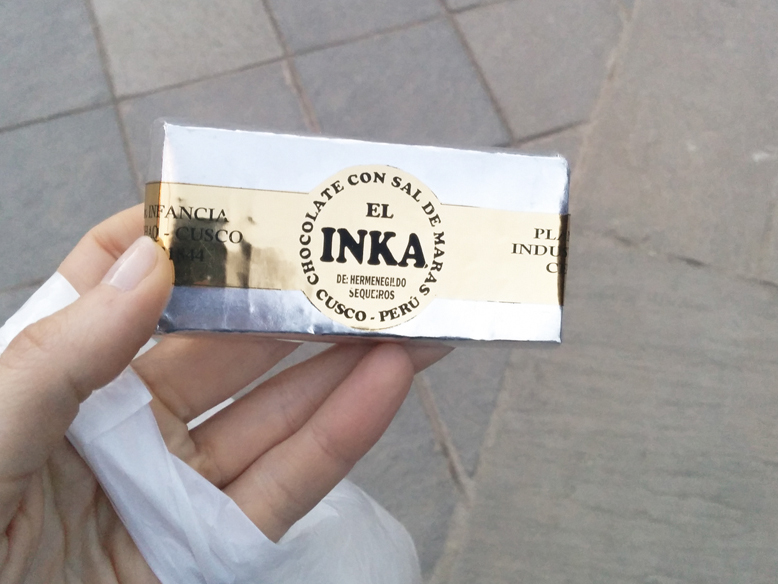
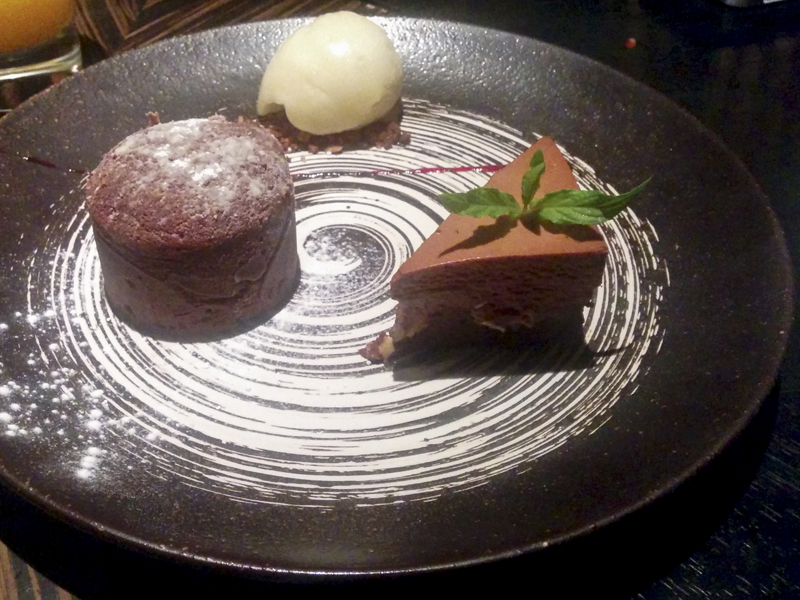
Alfajor: my favorite peruvian pastry, consists in two shortbread disks and a layer of dulce de leche.
El Buen Pastor, Cusco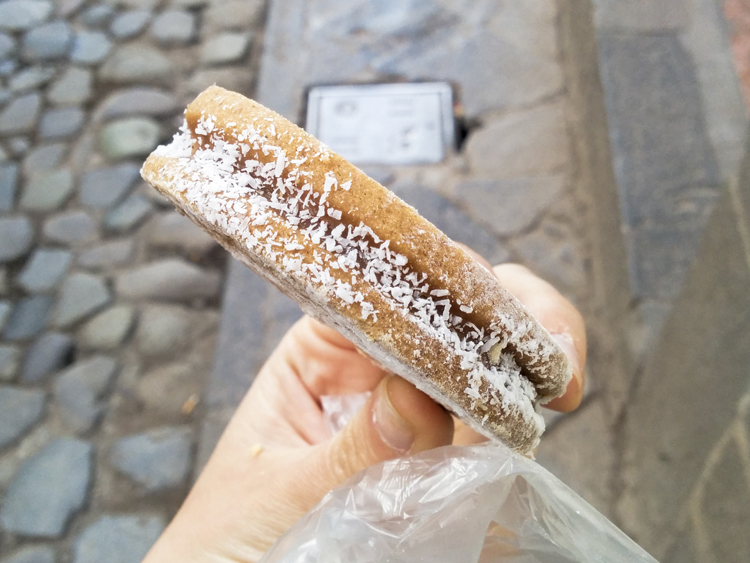
Mate de Coca: this is a treatment you HAVE to give yourself when in the Andes. It regulates the heart beats and calms stomachache and the headache. The Soroche (altitude sickness) is not a joke, it can be dangerous for people with cardiac problems and can put in bed young and old people for days. Coca can be taken in leaves directly by chewing but it is quite unpleasent and bitter. As an infusion I really liked it. The first days in the Andes I took at least 1,5 l of mate de coca per day and also bought many candies with coca flour, which are really good while trekking as they allow your body to fight the tiredom caused by altitude.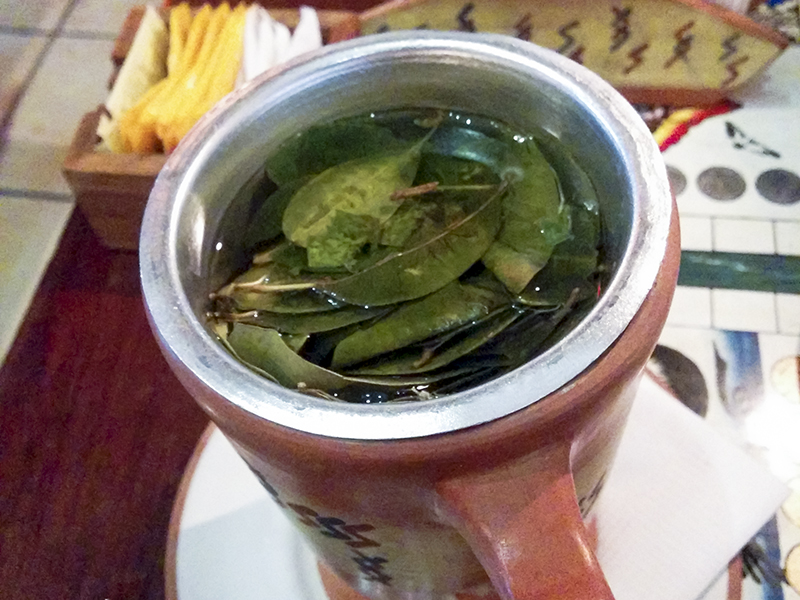
Hierba Luisa: a bit similar to lemon in its flavor, it helps relaxing and digesting.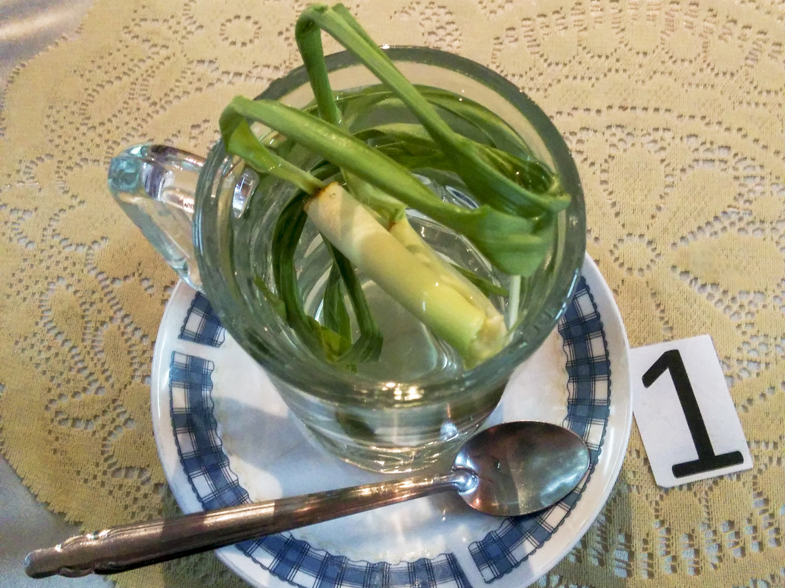
Muna: what you see on the ground is what I am drinking. A very small plant which helps calming the stomach and the intestine, and by rubbing it in your hands and breathing, it opens the lungs while in altitude.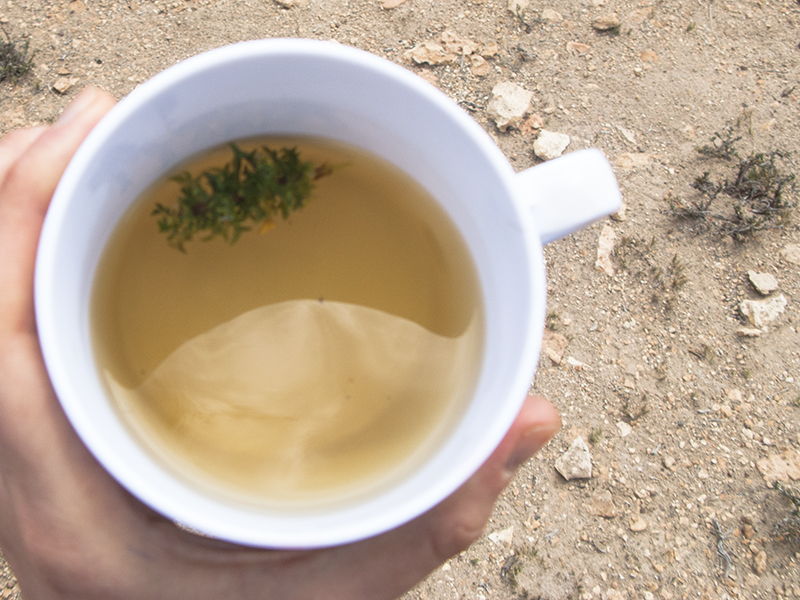

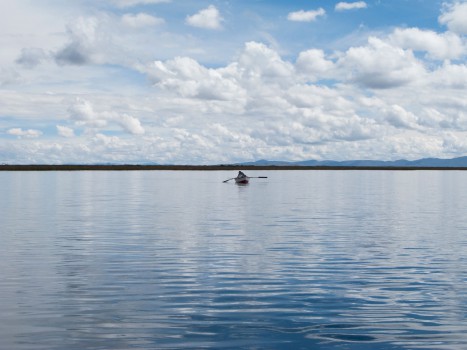
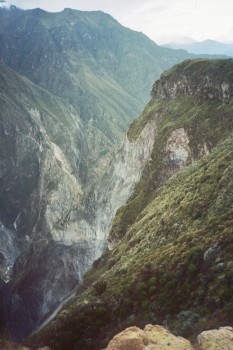
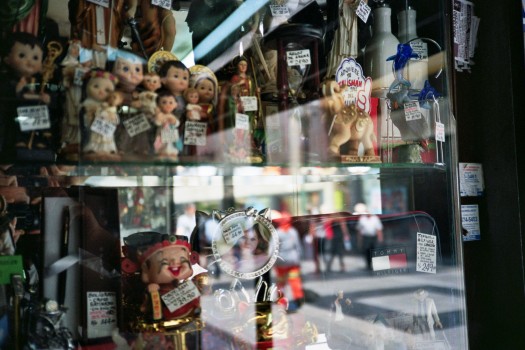
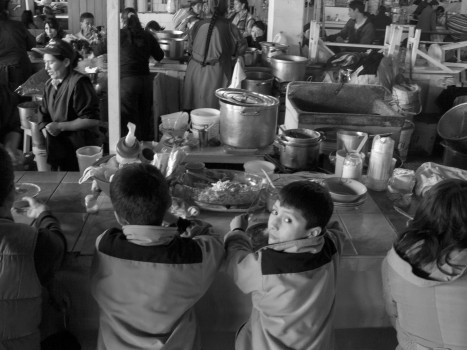
Be First to Comment